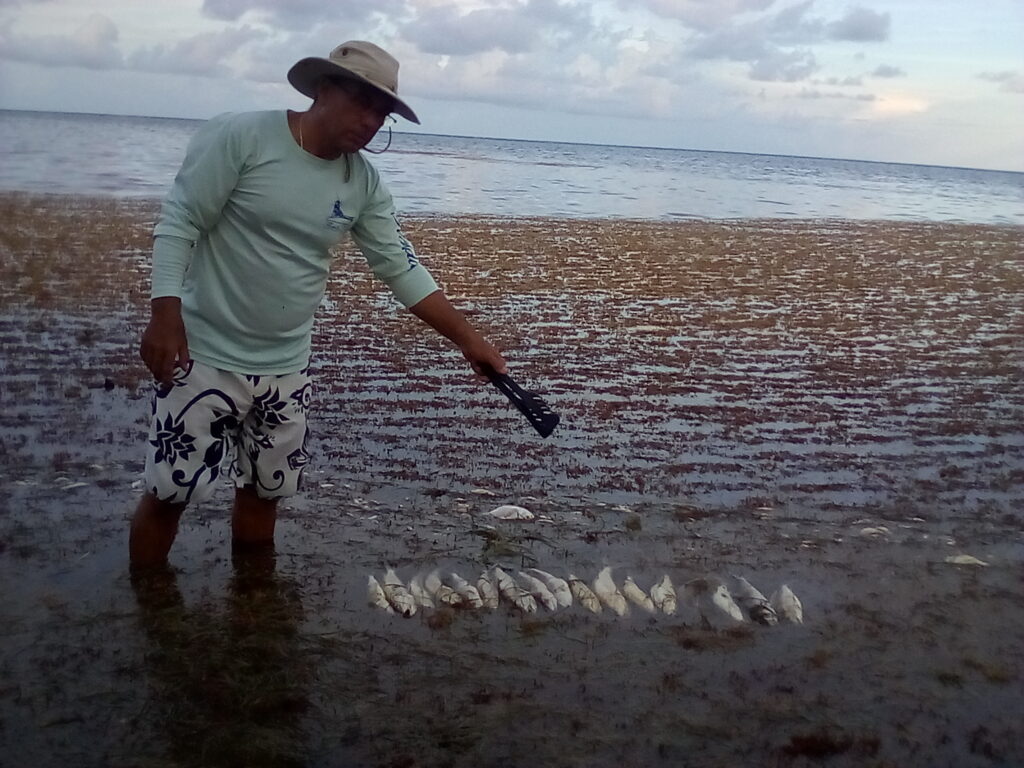Dead bonefish in sargassum. Photo: Elena M. de la Guardia
The new normal throughout the Caribbean, the Florida Keys, and South Florida is large mats of sargassum washing up on shorelines. Research suggests that these extra-large blooms of sargassum are due to a combination of excess nutrients, deforestation, and climate change. There has been a sargassum bloom every year between 2011 and 2018, except for 2013.
There are many species of sargassum, a type of brown algae, but the species that is getting all of the attention now is the one that floats on the ocean surface in the Atlantic Ocean, Caribbean Sea, and Gulf of Mexico. While adrift at sea, sargassum provides habitat for many organisms, from shrimp to crabs, fish and turtles. Some species are part of a community that only occurs with sargassum, others only use the sargassum as juveniles or as feeding stops. But when these sargassum blooms drift ashore, they wreak havoc.
On July 20, 2020, Lazaro Garcia Lopez, a conservationist and manager of Caribbean Casa Blanca in Xcalak, Mexico, woke up to what has become far too common – a shoreline covered in sargassum. “We woke up in Xcalak with this sargassum tide,” he said. “We traveled 12 kilometers of coast to the north, from our hotel, and we saw the sargassum tide in the whole area. In front of our house, about 70 meters from the coastline, we found 22 dead macabies.” (Macabies is the Spanish word for bonefish.) The death of the bonefish and the other fish Lazaro found that morning was likely due to a lack of oxygen.
When sargassum comes ashore, it piles up in the shallows, where it dies and eventually decays. The decay drains oxygen out of the water. Between the lack of oxygen and the shade from the floating sargassum, a lot of seagrass dies too. And as the sargassum rots along mangrove shorelines, it kills the mangroves – it covers the roots, preventing gas exchange, and as the sargassum decays hydrogen sulfide gas is released, further stressing and killing mangroves. In other words, these sargassum blooms are a serious problem for coastal habitats.
Lazaro’s account came from the waters within Xcalak National Park on the Caribbean coast of the Yucatán Peninsula of Mexico, a beautiful protected area with a great flats fishery. This isn’t an area that is contributing nutrients to the Caribbean, and there is no deforestation. Nonetheless, they are suffering from these sargassum blooms, as are coasts throughout the region.




